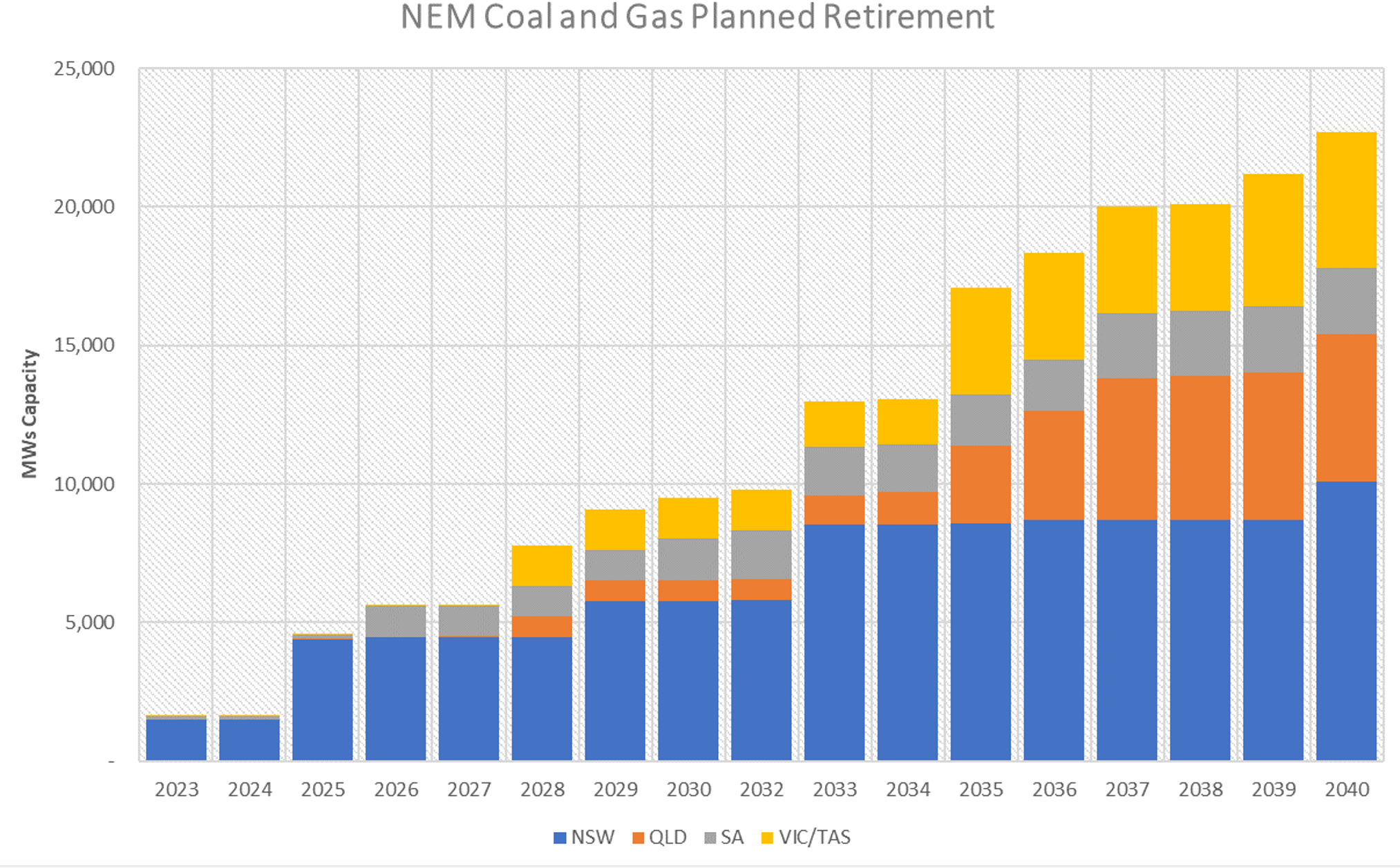The energy debate has changed – here's how Octopus Investments is positioned
The Octopus Investments' Director of Energy Markets Analysis, Brent Collyer, discussed three of the biggest changes he's seen in global energy markets in his career so far, and which will continue to evolve in the future, during a recent interview with Livewire Markets.
- The linking of domestic gas prices to international markets
- Accelerating change in the energy supply
- Shifting energy consumption patterns
“These drivers are both physical, mainly how do we get the generation capacity we need built and connected; and rules-based – what are the incentive structures to recognise that demand is shifting, and supply is more dispersed,” Collyer said.
Collyer also explained what’s happened to the international energy supply-demand dynamic since the Russia-Ukraine war broke out. Perhaps the most pronounced effects are in gas and electricity prices, which hit their highest-ever levels across Australia, and the impact on renewable energy assets.
"Tightening global gas and coal supplies – due partially to the war in Ukraine and increased global activity after the pandemic – are pushing up domestic energy prices. Renewables, without exposure to fossil fuel input costs, were able to benefit from the increased wholesale price of supply and as a result, experienced increased returns over the period," said Collyer.
In the following interview, Collyer explains how he believes energy markets will look in the decades ahead and the effect of government regulation. He also reveals the biggest sector development he’s watching in the next 18 months – and how he’s positioned for it.

Edited transcript
Given you’re heavily focused on data and analysis, what are these things telling you currently about where energy markets are now – and where they’ll be in the next 10/20/30 years?
1. The energy markets now:
The government has applied a cap on coal and gas prices within the NEM, to curb the extreme prices seen last year. Since then, fuel prices have fallen, generation supply has increased, and energy prices have trended towards historical levels. There is, however, still a significant level of uncertainty left in the market with the government-imposed cap due to be lifted at the end of the year.
International coal and gas prices have fallen significantly since last year but remain high. Traditional generation will still be exposed to higher fuel prices once the government cap is removed, and this will increase costs and put upward pressure on energy prices.
From an investment perspective, price volatility often results in higher revenues for renewable assets. With the short-run marginal cost of renewable infrastructure at close to zero, any outside increase in energy prices (like we saw in July 2022) feeds directly into higher profits. As such, renewables can be used as a possible hedge of rising energy prices.
2. Moving forward over the next two decades:
Facing an unprecedented removal of capacity from the traditional energy supply retiring: Liddell retiring now and Eraring, the biggest coal generator in the market, retiring by 2025 – and this is just the start. By the end of 2030, almost 10,000 MW of capacity will be withdrawn from the market.

Right now, the challenge is to get enough equivalent renewable capacity online as quickly as coal and gas is retiring. The chart above illustrates the size of the transition underway and the role that renewable generation and firming battery and hydro storage will play in the future market.
At the moment renewable generation represents roughly 27% of the energy supply mix but as this continues to increase the level of intermittency in the market will also increase. This intermittency drives price volatility as existing firm capacity (coal and gas generation) is either retired or unable to respond to meet changes in renewable generation supply.
This speaks directly to our portfolio approach to renewable investing. The need to replace baseload power demands a different approach from the more traditional, single-asset or single-technology exposure. By having wind, solar and storage that work in unison – you can begin to replace the incumbent technologies leaving the market.
This rebuilding of the market provides a unique opportunity for strategic investment by players like Octopus Investments that are well established and developing a broad portfolio of diverse generation assets.
3. Return to a steady state:
Over time the energy market in Australia will become stable due to a combination of factors:
- Continued strong investment in renewable generation so that the natural geographical diversity of output and range of technologies offsets their localised intermittent nature.
- Grid modernisation and expansion – improving the network efficiency, making it more resilient to disruptions and expanding the range of generation supply locations available as well as the energy flows within and between states.
- Sufficient firming storage capacity was developed to manage the intermittent supply base.
- Mature demand response programs will help integrate renewable energy sources into the grid by reducing demand during times of low renewable output.
Why this makes a fertile environment for renewable investment:
- Building a portfolio in a time of scarcity for electrons.
- Positioning for an era of volatility (the need for a portfolio approach).
- Positioned for the long term when renewables are at the core of our generation base.
Government regulation is a critical part of energy market volatility. Is it a headwind, tailwind, or something in between? How does this factor into your investment decisions?
For the last two decades, the Australian government has been committed to investing in Australia’s renewable future and although the mix of policy initiatives has shifted throughout time there has always been a central theme of creating a zero-carbon future for electricity supply.
Regulations provide a tailwind for investments when they create stability and predictability in how the market will perform. This is an increasingly important role in times of uncertainty and volatility. While we’ve seen some misalignment between the Federal and State governments, the last few years has shown more alignment through the adoption of state-based renewable energy targets and the promotion of energy storage projects.
Long-term initiatives like the large-scale renewable energy target and the small-scale renewable energy scheme, the creation of the Clean Energy Finance Company (CEFC) (investor in Octopus’ Institutional Fund) and the Australian Renewable Energy Agency (ARENA) have driven significant investment within the renewable energy sector and helped to redefine the electricity supply mix in Australia.
Creating a zero-carbon energy market continues to be a critical and central theme for policymakers, driven by overwhelming public support and an increasing level of corporate social responsibility. Investment into the renewable sector is not an optional scenario for the government, it is the foundation of how Australia will achieve this target.
Policy risk is something we absolutely consider in all of our investments as it impacts both the cost of capital as well as how we model the certainty of future revenues going forward. Investing in the renewable market needs to carefully consider all the impacts of existing and potential government policy. It is important to evaluate the potential risks and opportunities associated with regulations and to take a long-term view of the market to assess the impact of regulatory changes over time.
What’s the biggest energy sector development you’re watching over the next 12-18 months and how are you positioned for this?
State governments in each region within the NEM are developing specific zero-carbon strategies which involve a combination of:
- Retirement plans for existing generation assets.
- Providing incentives and funding that drive renewable and capacity-firming investments.
- Network enhancement – specifically new transmission developments and existing augmentations. By enhancing the network infrastructure, renewable energy sources can be more effectively integrated into the grid, unlocking their full value.
Over the next two years, we expect 4,380 MW of coal capacity to be removed and additional 4,587 MW of wind, solar, hydro, and peaking gas to be commissioned. A number of network developments have also come into play over the last 12 months enhancing intra-regional flows and are planned to come into play in the coming years:
- Northern QLD: Townsville to Cairns upgrades.
- Project Energy Connect: Connecting NSW to SA for the first time.
- NSW: Central to Western transmission link.
- VIC: Central to Western transmission link.
Octopus is well positioned in this changing environment, with its portfolio of existing wind and solar assets as well as new developments including battery capacity across the NEM to provide energy and firming solutions into a short energy and increasingly volatile market.
Further to this, the range of asset types and location of resources in the portfolio allows Octopus to offer unique and market-leading products, which will be able to capture strong value during and beyond the transition.
Leading Australia's drive towards a cleaner future
Octopus invests directly into the Australian renewable energy sector, helping to provide the innovative solutions it needs during its transition to a clean energy future. Visit their website for more information.

2 topics
1 fund mentioned

